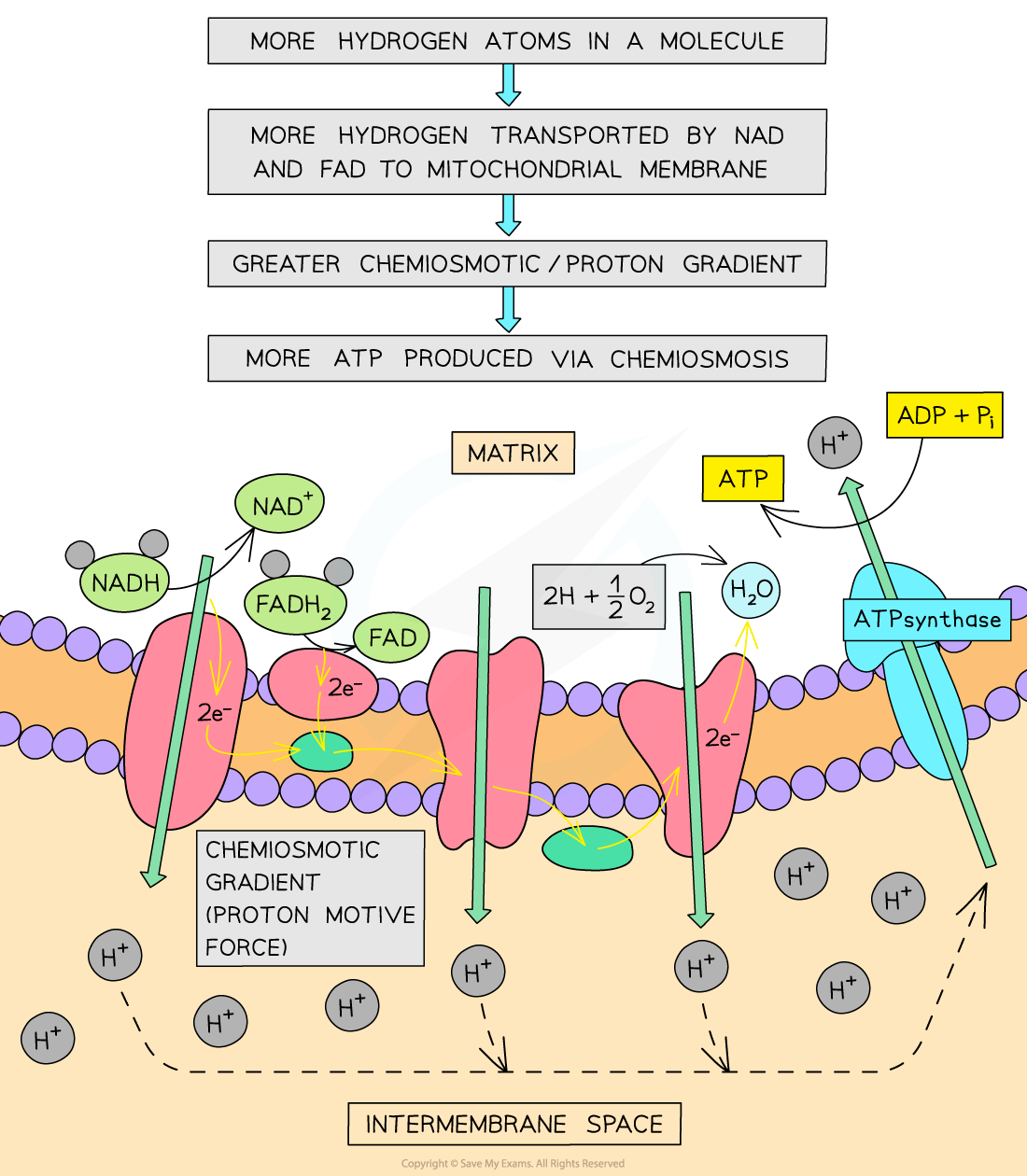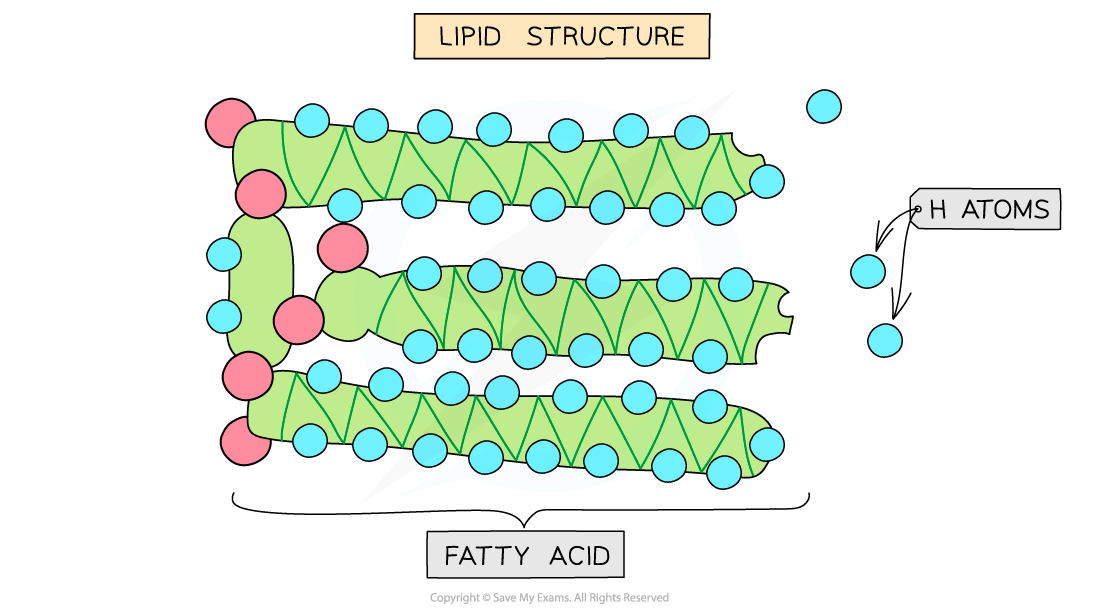Energy Values of Respiratory Substrates (Cambridge (CIE) A Level Biology): Revision Note
Exam code: 9700
Energy values of respiratory substrates
Glucose is the principal respiratory substrate for aerobic respiration in most cells
When the supply of glucose in a cell has been used up, that cell may continue respiration using other substrates
These may be:
Other carbohydrates
Lipids
Proteins
Amino acids from proteins are only respired aerobically when all other substrates have been exhausted
This is because they often have essential functions elsewhere in the cell
Amino acids are required to make proteins which have structural (e.g. in the cytoskeleton) and functional (e.g. enzymatic) roles
When these different substrates are broken down in respiration, they release different amounts of energy
Respiratory substrate | Energy value / kJ g-1 |
|---|---|
Carbohydrate | 15.8 |
Lipid | 39.4 |
Protein | 17.0 |
Explaining the differences in energy values
Lipids have the highest energy value (39.4 kJ g-1) followed by proteins (17.0 kJ g-1) and then carbohydrates (15.8 kJ g-1)
The differences in the energy values of substrates can be explained by their molecular composition
Specifically how many hydrogen atoms become available when the substrate molecules are broken down
During respiration, hydrogen atoms play a vital role:
The substrate molecules are broken down and the hydrogen atoms become available
Hydrogen carrier molecules called NAD and FAD pick them up (become reduced) and transfer them to the inner mitochondrial membrane
Reduced NAD and FAD release the hydrogen atoms which split into protons and electrons
The protons are pumped across the inner mitochondrial membrane into the intermembrane space - forming a proton / chemiosmotic gradient
This proton gradient is used in chemiosmosis to produce ATP
After the protons have flowed back into the matrix of the mitochondria via ATP synthase they are oxidised to form water
This means that a molecule with a higher hydrogen content will result in a greater proton gradient across the mitochondrial membrane which allows for the formation of more ATP via chemiosmosis
Fatty acids in lipids are made up of long hydrocarbon chains with a high proportion of hydrogen atoms
These hydrogen atoms are released when the lipid is broken down


Examiner Tips and Tricks
You may be expected to explain why different respiratory substrates have different energy values. Here’s an example question: Explain why carbohydrates, lipids and proteins have different relative energy values as substrates in respiration in aerobic conditions. [6 marks]
Your answer will need to relate to the differing hydrogen concentrations held within those substrates, and the consequent effect on chemiosmosis and energy release.

Unlock more, it's free!
Did this page help you?